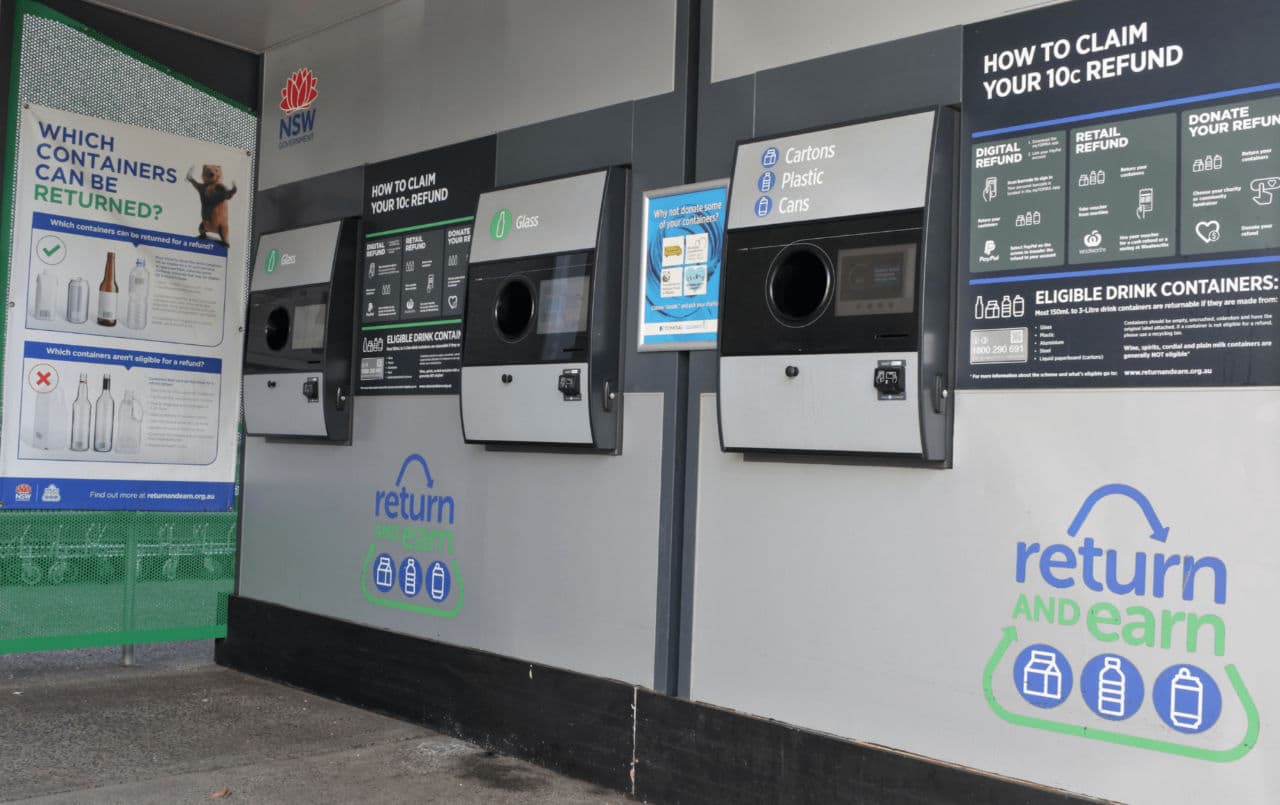How well do you really know your customers?
There’s a good reason for asking what at first seems like a very simple question. We tend to make assumptions to fill the gaps in our knowledge, and these can often end up being costly.
Even businesses that are well established, and who have great relationships with many of their customer, often don’t really know that much about them, with many putting decent money into marketing to a customer type that can span an age group of two decades, and make sweeping generalisations about their lifestyle and likes.
That’s not ‘targeted’ marketing.
If you’re working with women between the ages of 25 – 45, just think of the huge diversity of tastes, lifestyles and purchasing power they’ll have. Running a single message campaign, or using the wrong images will not generate anywhere near the level of conversions your budget deserves.
Get to know your customers
There are many tools and methods available that are either free or low cost, that you can use to quickly build a more detailed picture of exactly who your most profitable customers are, and discover the people behind the data. This knowledge will then go on to inform many of the activities you do that will grow your business, from the language you use on your site and in everyday communications, the types of product images you put up online and post on social media; the locations you target to develop new business; the publications you connect with, or advertise in; the competitions and offers you develop to generate interest and interaction.
You get the picture.
This article will help you kick start this process by offering tools and tips on how to use them to identify your top customers, and gather more detailed insights into your key market.
Let’s start with an often under-valued resource – the data held in your company systems.
Internal data and your current customers
Current customers (data insights from tools such as Google Analytics, ecommerce reporting, email performance & social profiles)
Google Analytics (GA)
This has developed into an essential tool for anyone running a website as it offers a huge amount of data, and all for free.
Your first port of call should be to dig around in the Audience section and get a feel for your current site visitors:
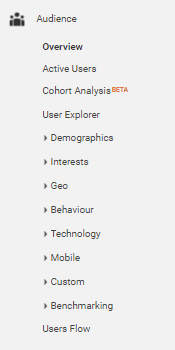 Overview—A top-level view of user metrics
Overview—A top-level view of user metrics
Demographics—The age and gender makeup of your website audience
Interests—User behaviors segmented by affinity and marketing categories
Geo—The languages and locations of your website audience
Behavior—Comparisons of new and returning visitors, how often return visits occur and how long visitors spend on your site
Technology—The browsers, operating systems and networks of your website visitors
Mobile—A breakdown of devices used to access your website
Custom—Reports you define
Users Flow—A visualization of how users move through your website
To get the most from GA, you’ll need to start setting up conversion goals. To learn more about getting the most out of your Google Analytics data, Google produces some great resources, plus Practical Ecommerce has gathered a useful guide of 21 free tutorials for Google Analytics. Most of the main ecommerce software platforms provide a wealth of information to help you get analytics set up, like this example from Shopify.
Ecommerce data
Whatever platform your store runs on, after trading for a while you will have gathered a pool of data on your customers purchasing habits. The simplest way to start using this to develop more business is to segment your customers into basic groups.
You will no doubt know your average purchase value (APV), but what about your most profitable customers (either by order value, frequency, or lifetime value), or your lowest value customers.
By identifying these key groups, and then digging into the people behind the data, you can start to identify patterns in location, income, lifestyle etc.
What to do with this information: if you’ve identified a customer type that typically delivers low value, reduce your marketing activities towards this group, and do more of the good stuff that brings in high returns by focussing your resources on your highest value customer. If you’re looking for something that can do a lot of the hard work for you, tools like Custora will automatically analyse and segment your best customers for you.
For more on how the value of creating more detailed customer profiles, here’s a handy read from Big Commerce.
Social profiles (forums, societies, media)
You can use the vast amount of personal information available on social media to get to know your customers more.
- If you are active on social media, you can learn a great deal from taking some time looking into your followers accounts. Take a look into the forums, societies and media they connect with.
- Not all followers will be customers, so it’s also worth searching on Google and the main social sites using their email address to see what useful information you and pick up.
- If you still can’t find them, try running a campaign specifically aimed at this group to encourage them to connect on social (using any method of contact you normally use – email, invoicing, push messaging etc.). It will be low volume, but really personal. Make it even better for them as VIP customers by offering a reward as thanks.
- Plus, once you are connected, use the opportunity to identify the types of content they engage with to get to know their preferences.
Questionnaires & feedback (see tools below)
Here, the old adage “You don’t ask, you don’t get” rings very true. And there are some really simple ways to gather useful insights from your customers by simply asking the right questions at the right time, whether this is when they are live on your site, or at a key moment (such as after an item is delivered) in an email. I’ve covered some tools for this in the surveys & feedback section below.
Survey & Feedback Tools
Surveymonkey (free & paid options)
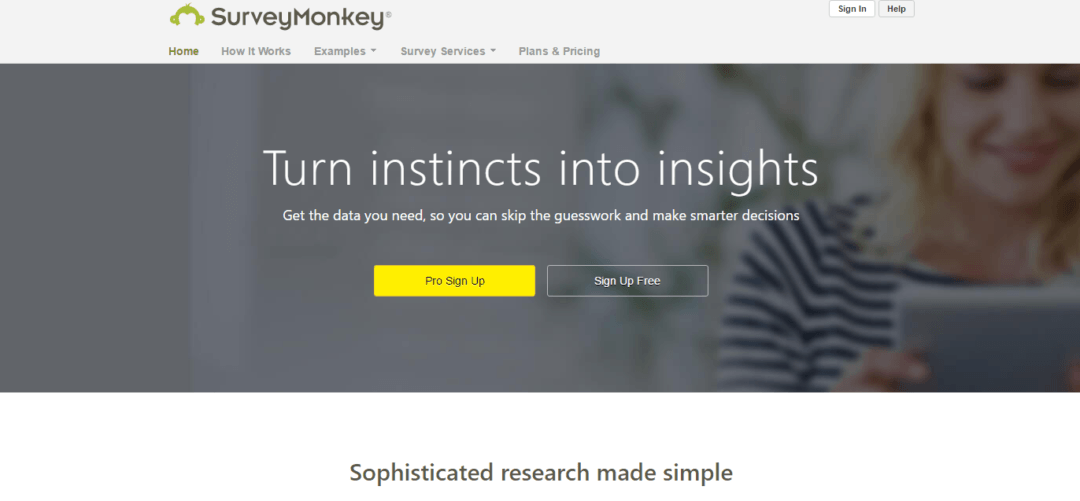
SurveyMonkey is super easy to setup and start using straightaway to create simple polls to in-depth surveys. It has hundreds of pre-written questions if you need some inspiration. The free package includes 10 questions, 100 responses, plus basic email support.
Typeform (free & paid)
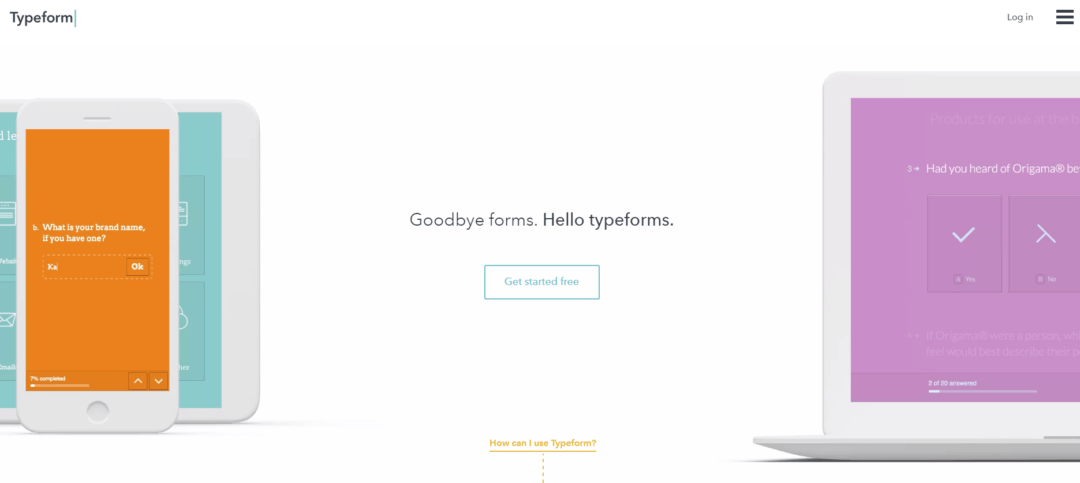
Typeform should be your go-to option if you want to effortlessly make your survey look great. It’s intuitive to create and walks you through putting your survey together one step at a time. The free version comes with a load of features including unlimited questions and answers.
Qualaroo (free trial available)
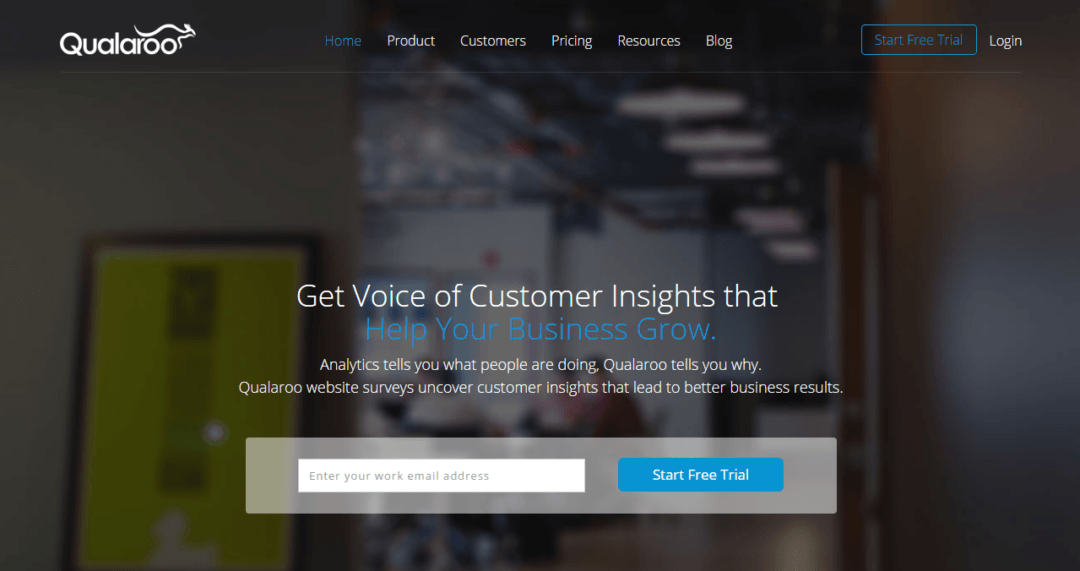
This is a great tool for creating multiple surveys that are triggered based on visitor interaction, so you can ask relevant questions at just the right time, while people are using your site. It can also help reveal why visitors don’t convert by using their exit intent surveys.
Hotjar (free and paid)
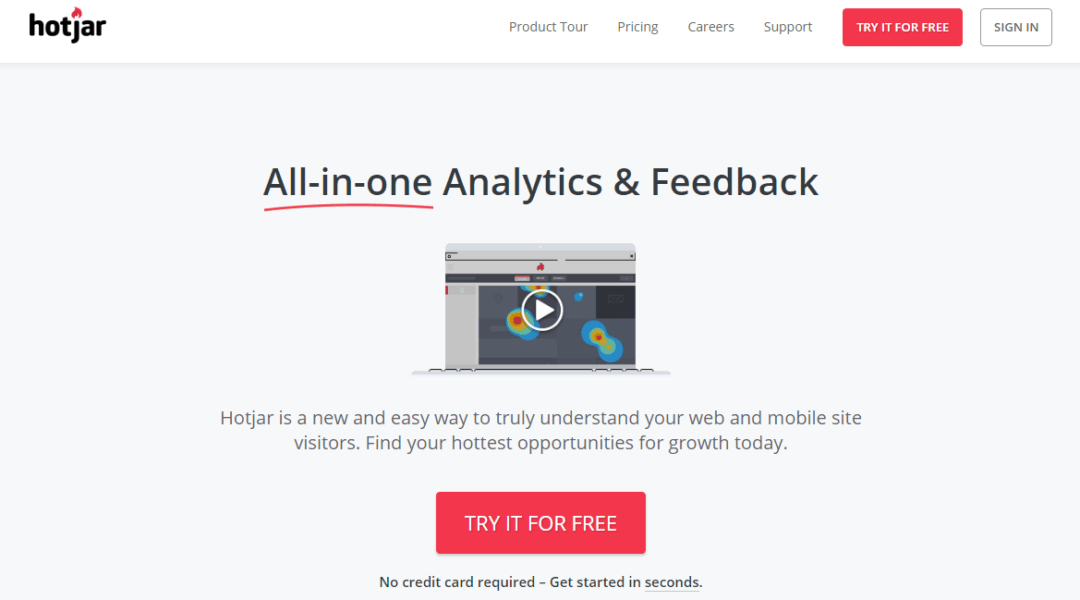
Hotjar helps you to visualise how users interact with your site, whether they’re on desktop, tablet or mobile. It has a stack of features including heat maps, surveys and visitor recordings.
Competitions (e.g. tell us in x words what you like)
Gleam.io (free & paid)
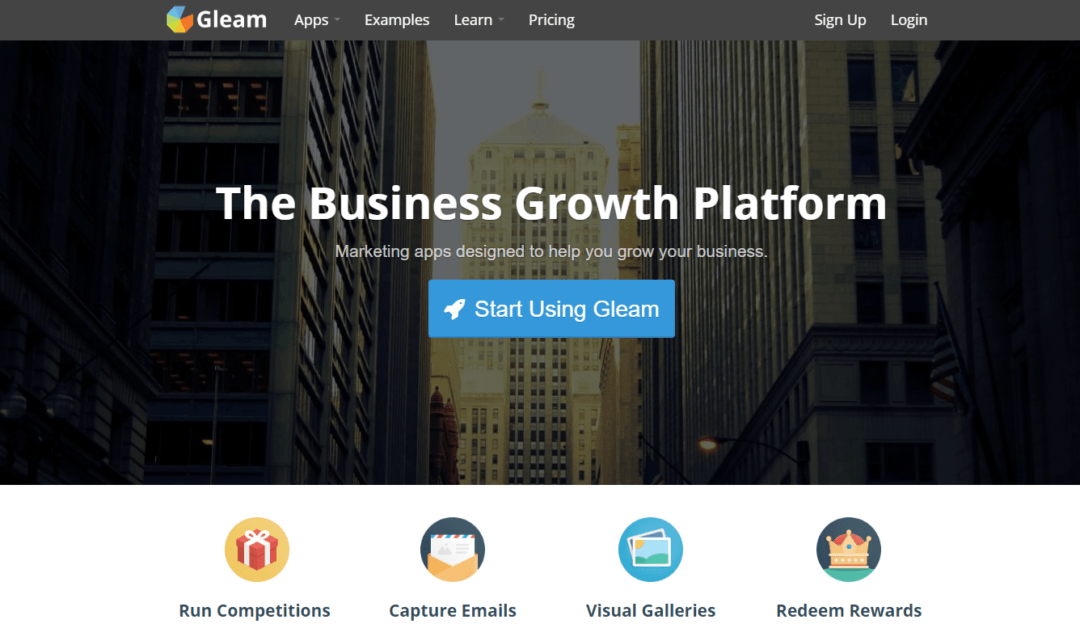
There are enough competition tools out there, so here I’ve featured one I’ve used and had great success with – Gleam. It’s simple to set up, has a really user friendly dashboard, and offers multiple entry options to encourage maximum response.
Not ‘tools’ as such, but worth a mention
Yelp, Amazon, Apple & Google App stores – they’re not really tools, but offer an added method of getting to know how particular types customer think
Forums (use search term + forum) – again, this is more to get into how your customer may be thinking, and highlight any major likes or dislikes. You can also join the conversation if you want to ask specific questions, but avoid any attempt to sell or promote your business (stay undercover!).
External data
Below are some of the best free, or low cost, tools that will help you gather more insights about your customers.
Tools for Discovering Trends & Competitor Analysis
Google Trends (free)
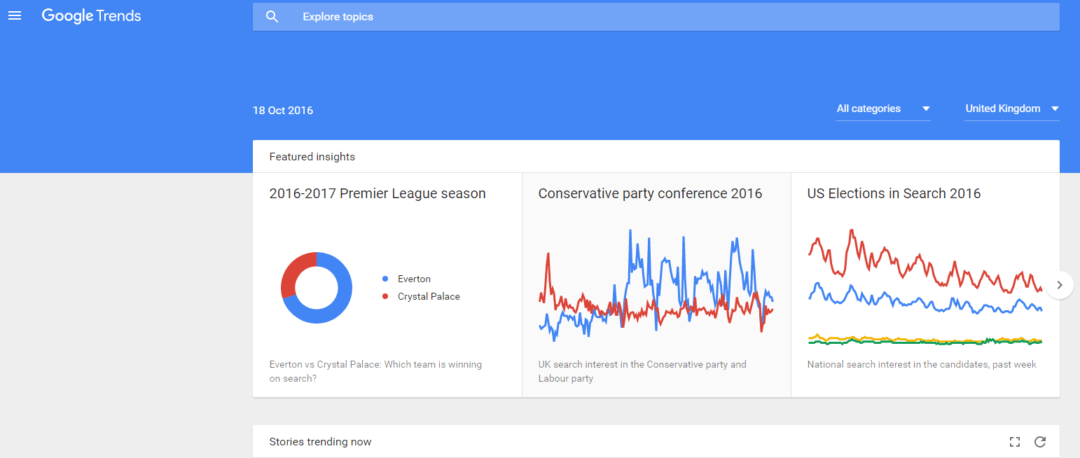
Google Trends is not so much a tool for discovering your ideal customers, it’s more for expanding on the insights you’ve already gleaned about them, and exploring trending topics and stories around this information. It’s useful for getting a feel for people are searching for at any moment based on category and location.
You can enter a search term related to your business, say ‘fitness’ and then add filters to see the search popularity. This can be filtered by:
- a specific time period (choose from between the past 5 years to the past hour),
- compare that term to others.
- By category (such as entertainment, beauty and fitness, sports) and subcategories of these
- By type of search. By default this is ‘Web’, but it can be narrowed to Image, News, Shopping and Video (YouTube).
In the example below I’ve run a basic comparison between the terms ‘fitness’, ‘health’, ‘nutrition’ and ‘well being’ in the UK over the past 12 months. You can then dig deeper and search each term by region or city, and it offers related terms people are using for their searches.
So from a pretty basic tools, it can help you to identify specific language your market is using when searching online and how this may be adapting over time, so you can test and adjust how you communicate with your audience. It also offers useful suggestions for related subjects they may be interested in, which can kick start a whole new avenue of connecting with a specific audience type.
Consumer barometer (Google)
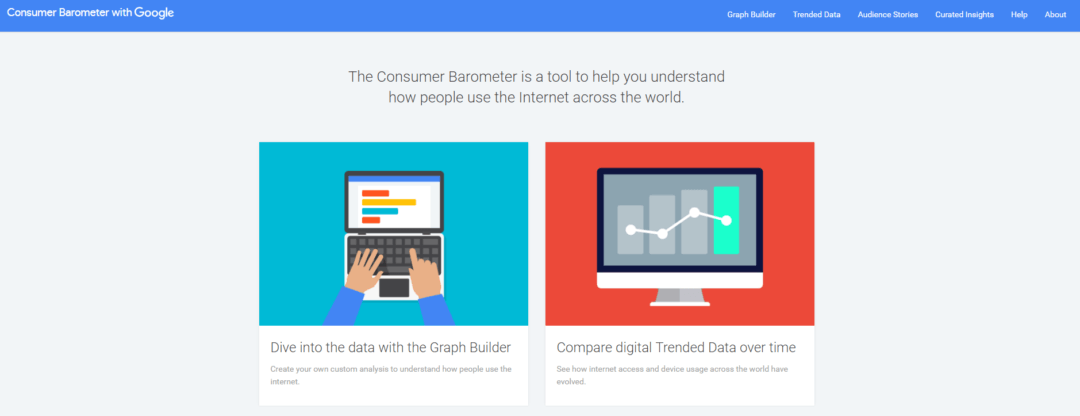
Another of the many Google tools, this time the consumer barometer offers a super convenient way to tap into how your customers buy online. It started as a very US focussed resource, but they’ve slowly built it out so that it has a pretty decent set of UK data.
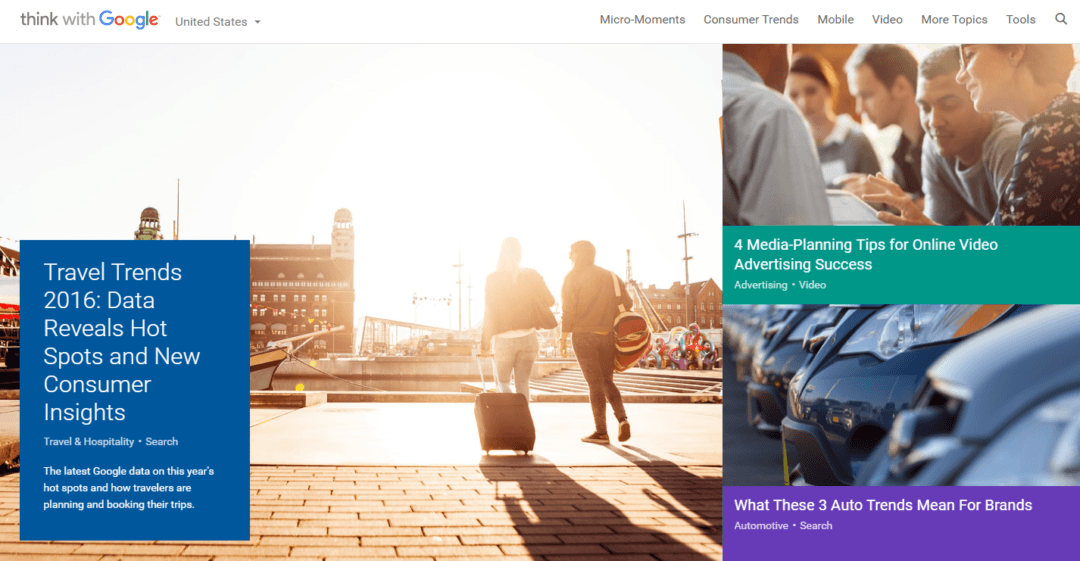
This site really brings together a lot of Google’s research & insight tools. It features a number of insightful reports about how businesses are using research and insights to better connect with their customers, along with up-to-date findings about how people are exploring the world, discovering new connections and making purchasing decisions online.
Sections include video, mobile, moments that matter (when & how key buying decisions are made), seasonal trends, plus links to a number of other useful research tools (yes, there’s more – and you thought Google was just a search engine!)
If you want to stay ahead of (or at least current) with the latest thinking and get insights into how your customers lives and technology intersect, then this is a decent place to start.
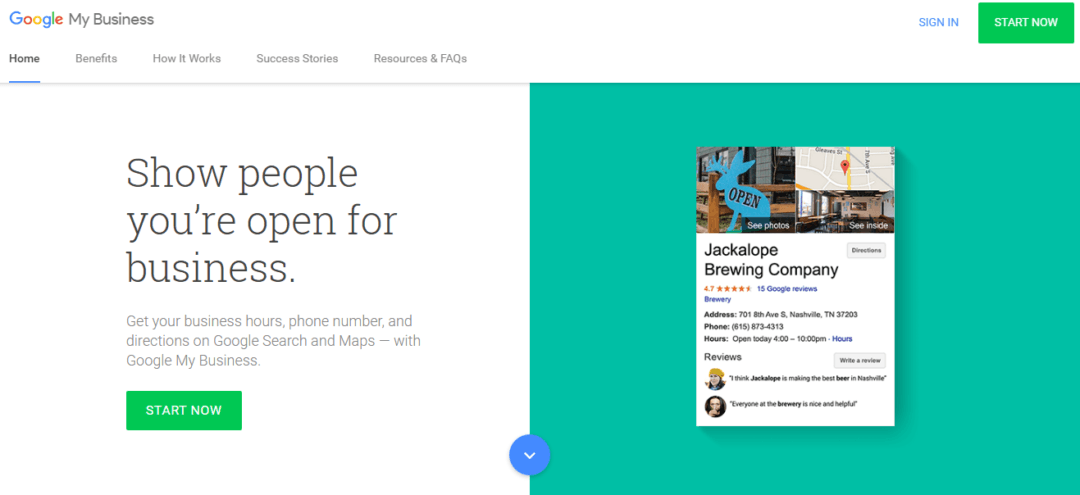
Also worth a mention is Google My Business. This tool has been recently been updated (August 2016) to provide added insights for businesses about how local customers are finding their websites. There is some crossover with Google Analytics, but it’s a simple way to to see whether people are finding you from Maps vs Search, and whether they searched using your brand name vs a broader search such as ‘garages in my area’.
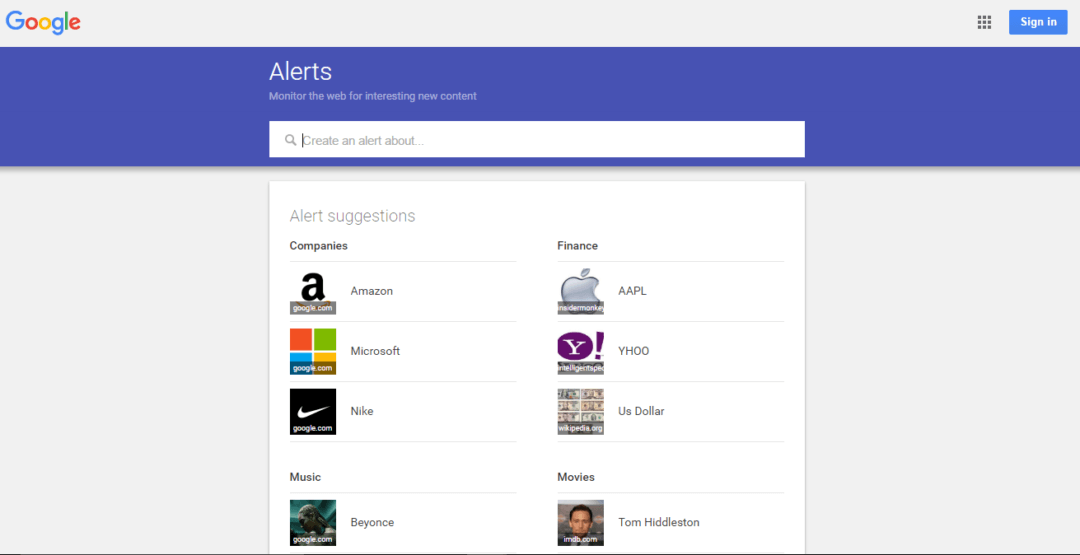
Yet another tool from Google, Alerts lets you set up custom alerts on any topic that interests you, and it will notify you of any matches. It’s useful for monitoring competitor activity, brand comments, and specific news about pretty much any subject you like. So whatever business you’re in, you can set it to monitor the chat on the web about your specialist field.
It can be customised by sources, region, language, frequency, plus you can tell it where, when and in what format to send you updates. It’s basically a really handy way to filter through the incessant noise of the web and get a real focus in on the latest happenings that are relevant to your business to keep you in touch with your customers.
Yougov profiles (free and paid)
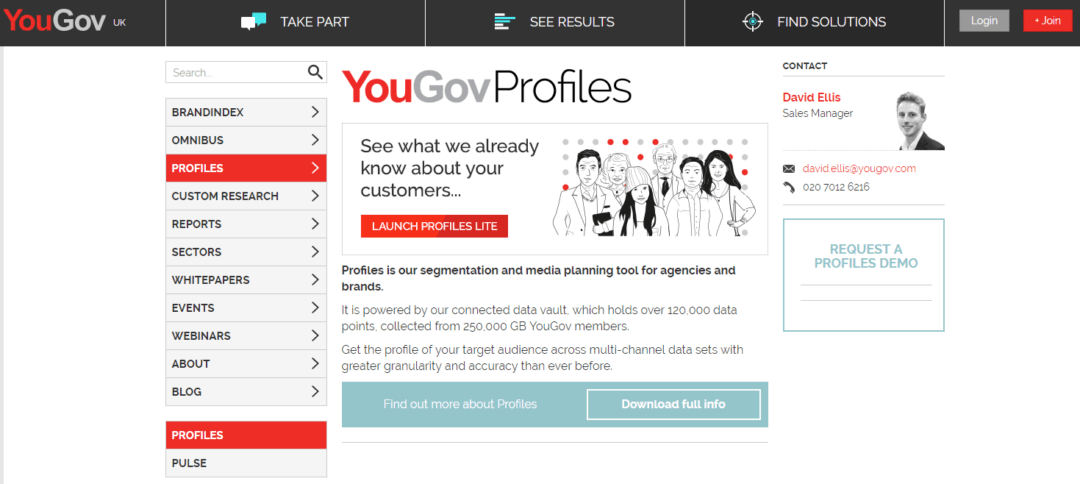
YouGov Profiles Lite is their free version which gives you access to some of their huge breadth of UK data gathered from their regular surveys of 400,000 people in the UK. It’s really user friendly, with simple walk throughs for first timers. Basically, you start with a brand, person or thing, and it will pull together a profile of the typical user / customer.
The only thing to be aware of here is that this is top level data, so limited by the fact that it will only pull in information based on an initial searches for big brands, well known people or regular ‘things’. It won’t deliver results if you put a local business name, your friend’s name, or an obscure object in.
Having said that, the power of YouGov Profiles comes from selecting a well known brand, person, or thing related to your field of business to gain a top level view of the ‘typical’ consumer. And it does regularly come up with some surprises that you can use to grow your business.
Once again, I’ve used the fitness search, and from this it automatically pulled in all the data it had on ‘readers of Men’s Fitness Magazine’. No surprises that they were predominantly male (92%), but that still means that 8% are female.
They information broken down into Demographics, Lifestyle, Personality, Brands, Entertainment, Online and Media, so you can build a pretty decent picture of the typical lifestyle, which can then be applied to testing out new tactics for your business.
Statista (free & paid research resources)
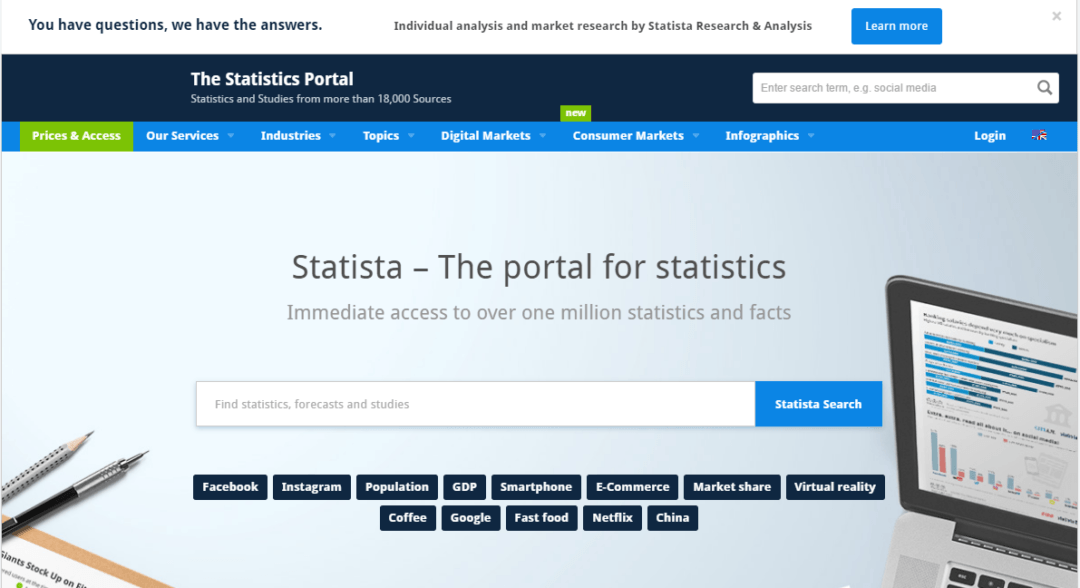
Statista markets itself as ‘the portal for statistics with immediate access to over 1 million statistics and facts’. It’s a US site, but you can filter down into European countries, and then delve into a number of views which include Industries, Topics, Digital Markets and Consumer Markets.
It has a huge amount of data, with some great market statistics, reports and studies gather from a number of sources. You can either enter a search term and then filter through the different presentations, select from the different view options, or simply scroll through the results to find a relevant title.
Many of these reports will help you quickly assess the size and potential of the market you are in, as well as offer subjects that will further inform you of your customer’s lifestyles, favourite brands and possible future purchase choices.
Alexa (competitive market, web presence)
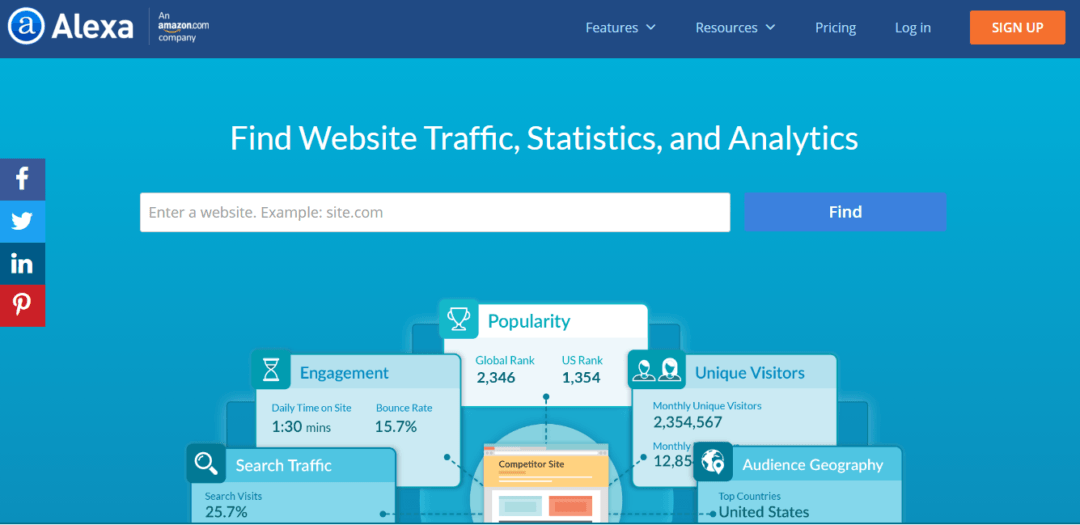
Alexa offers a number of paid SEO tools, but it’s free site info tool is a handy benchmarking tool that will help you build an understanding of your site’s current online visibility, and then compare this to your competitors. You can also use it to delve into your competitor’s sites to gain insights into the things they are doing differently / better than you, so you apply these learnings to your site.
First off, there’s Site Overview tool to better understand your competition’s audience and strategy and how it compares to yours. You can look up any site and get a quick snapshot of its key performance metrics by:
- Traffic Metrics
- Engagement Information
- Audience demographics
- Basic visitor insights
- Top keywords from search engines
- Top upstream sites
- Top sites linking in
You can also set up a Site Comparison to benchmark your site against your competitors and gain access to historical traffic trends for free. You’ll need to register an account to be able to activate this feature, but don’t worry – it’s free.
As well as spying on your closest competitors, you can also check out the top ranking sites in your category and take lessons from the people who have got it dialled. A few free insights into how they’re connecting with their customers is always a lesson worth learning!
If you’re a Chrome user, the have an Alexa extension which is really handy to check out sites as you visit them. Just hit the icon in your toolbar to get a snapshot of the site’s stats.
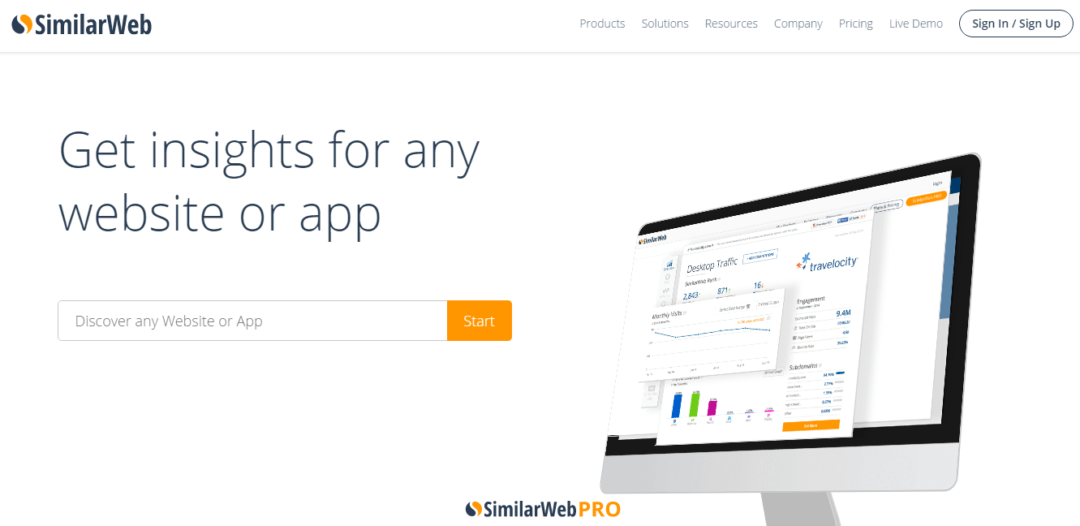
I’m a big fan of SimilarWeb and this is one that makes it onto my toolbar. It’s invaluable for researching a website. You begin by entering a website URL and it give you a traffic overview, referrals (where people visit before going to the site, which social channels are generating the most visits, what display ads they’re using, the different domains they have content on, an overview of audience interests, similar sites, and any mobile apps they have.
As with many of these tools, it you can feel a bit like Alice falling into the rabbit hole, especially with similar sites function. You can select any of the sites to run side-by side comparisons with your own, and therefore identify where they may be performing better, or any sources of traffic that you aren’t currently exploiting. And you can can take any of these similar sites, or referral sites and do a whole site analysis on them.
This type of activity is incredibly useful for expanding your knowledge of when your potential customers are spending their time online, and will uncover some great ideas of where you should be advertising, the type of content you could create or partnerships you should develop.
If you’re a Chrome user, the have a SimilarWeb extension which is really handy to check out sites as you visit them. Just hit the icon in your toolbar to get a snapshot of the site’s stats
Last one for this list is a tool for using social media for customer research. I’ll be writing more on this subject very soon, so if you’d like to know how to make the most of this and other tools to look up ideas for competitor research / polls etc. on social media, just sign up to my newsletter below.
Followerwonk – (free & paid options)
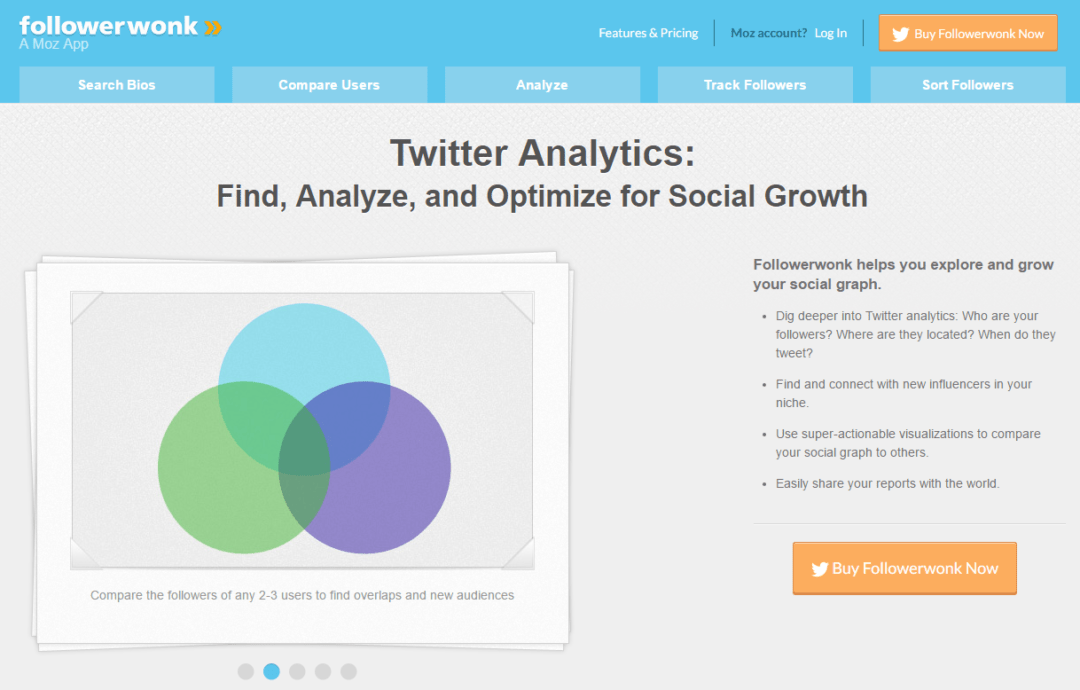
This tool enables you to search Twitter bios and identify the most influential people in a space based on your chosen keyword. It’s incredibly helpful for looking at competitors or other influencers who connect with customers in your target market, and seeing what kind of content they share, the language and images they use and is getting engagement, and what their audience looks like.
Getting started
Now I’m not saying that you have to use all of these, but now at least you have a good starting selection of tools and methods with which to build a better, more focused understanding of your best customers.
By identifying your best customers, you can then begin to properly inform every aspect of your business and steer the focus any growth plans and resources you may have–sales, marketing, new products, customer service–towards getting the very best returns.
I hope this has been helpful, and if you have any questions, you can connect with me on Twitter @piernine_co, or email me at john@piernine.co. If you’d like any help in identifying and marketing to your most profitable customers, you can find more information at piernine.co




